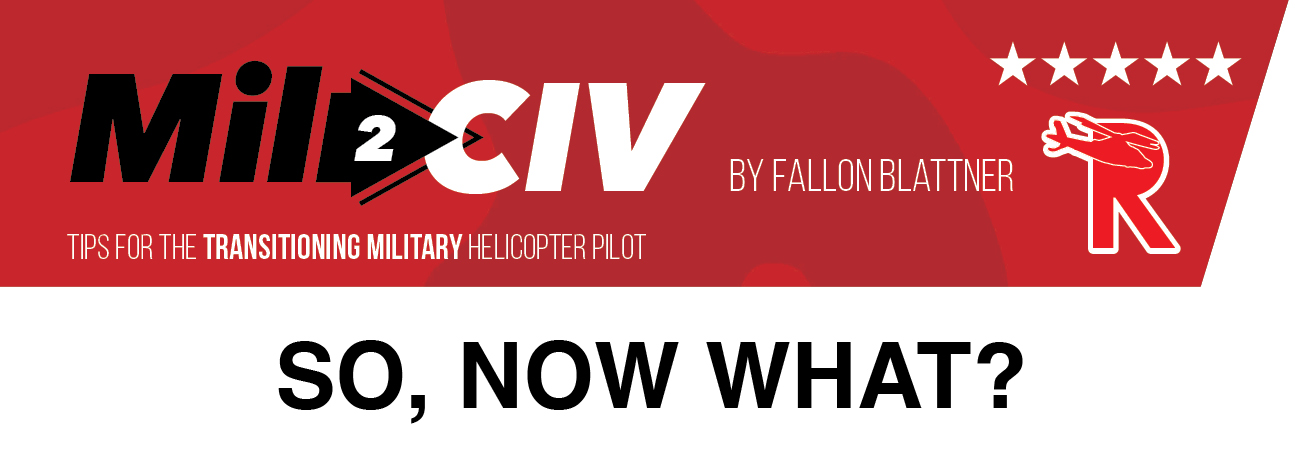|
Aug
19
2024
|
|
Posted 1 years 113 days ago ago by Admin
|
|

In preparing to transition out of the military to the civilian aviation industry, you have likely done a plethora of research and preparation. After reading articles, attending networking events, assessing job postings and salaries, you encounter a major roadblock: you do not have enough flight hours or relevant flight time to qualify for any of the jobs on the market. So, now what?
This was precisely the position I was in about seven years ago when I left the military. As an officer in the MEDEVAC unit, I was only able to accrue approximately 600 hours during my time of service, which was certainly not enough to allow me to be eligible for most hiring minimums in the civilian sector. The good news is that it is possible to be successful in the rotary-wing industry with the right amount of determination, sacrifice, and patience. There are many programs that allow military trained helicopter pilots to transition into commercial fixed-wing positions. However, navigating the rotary-wing industry is a bit trickier, especially if you are a low-time pilot.
The first key to success is networking. By attending helicopter conferences, joining professional organizations, and even reaching out through online networking platforms, I was able to meet and get advice from prior military and civilian pilots on what avenues I could explore. Through one of these connections at a conference, I was put in contact with a small Part 91 tour operator in South Dakota where I received my first civilian flying job.
Part 91 sightseeing tours are a great opportunity for lower time pilots. While the hiring minimums are typically less than a Part 135 operator, the pay is also less, which is a sacrifice that may need to be made for a period of time to gain the necessary flight time to qualify for higher paid positions. The experience of flying on your own is one that many military pilots are typically not accustomed to but serves as a great learning tool and instills confidence.
Another option for obtaining flight experience is to become a certified flight instructor. You may first need to acquire flight time and certificate ratings in helicopters you have not previously flown to be eligible for these positions, which would be an out-of-pocket cost. Flight instruction is the most common way civilian trained pilots can accumulate experience to secure their next career step. While the hours are demanding and pay is limited, this option does provide the necessary flight time, experience, and allows you the flexibility to choose your location.
Finally, many commercial operators are flying military surplus aircraft where you may serve as a second-In-command pilot during fire or utility operations. An FAA commercial certificate and Class 2 medical will be required for these positions and allow for an introduction into various sectors of the industry. The negative is that many companies will not provide additional training in other aircraft or specific job skills, and these hours do not help contribute towards your total pilot-in-command flight hours.
These options are just a few courses of action that one may take while transitioning out of the military with low flight hours. It is important to remain open to smaller markets, seasonal operations, and to network with industry professionals. Landing your “dream job” will likely not be a linear path, but requires building on experience from jobs in the civilian industry. Remain patient, humble, focus on your long-term goals, and make sacrifices initially for success in the future.
READ MORE ROTOR PRO: https://justhelicopters.com/Magazine
WATCH ROTOR PRO YOUTUBE CHANNEL: https://buff.ly/3Md0T3y
You can also find us on
Instagram - https://www.instagram.com/rotorpro1
Facebook - https://www.facebook.com/rotorpro1
Twitter - https://twitter.com/justhelicopters
LinkedIn - https://www.linkedin.com/company/rotorpro1